Finding the best tarot deck is crucial whether you are a beginner or an experienced reader. This guide will help you explore various tarot decks, offer tips for picking the best one, and provide key insights into their history and care.
Key Takeaways
-
A tarot deck has 78 cards split between Major Arcana and Minor Arcana, each with unique themes and meanings.
-
Choosing your first tarot deck is personal; look for artwork, themes, and representation that resonate with you.
-
Caring for your tarot deck, including regular cleansing and proper storage, is crucial for maintaining its energy and longevity.
Understanding Tarot Decks
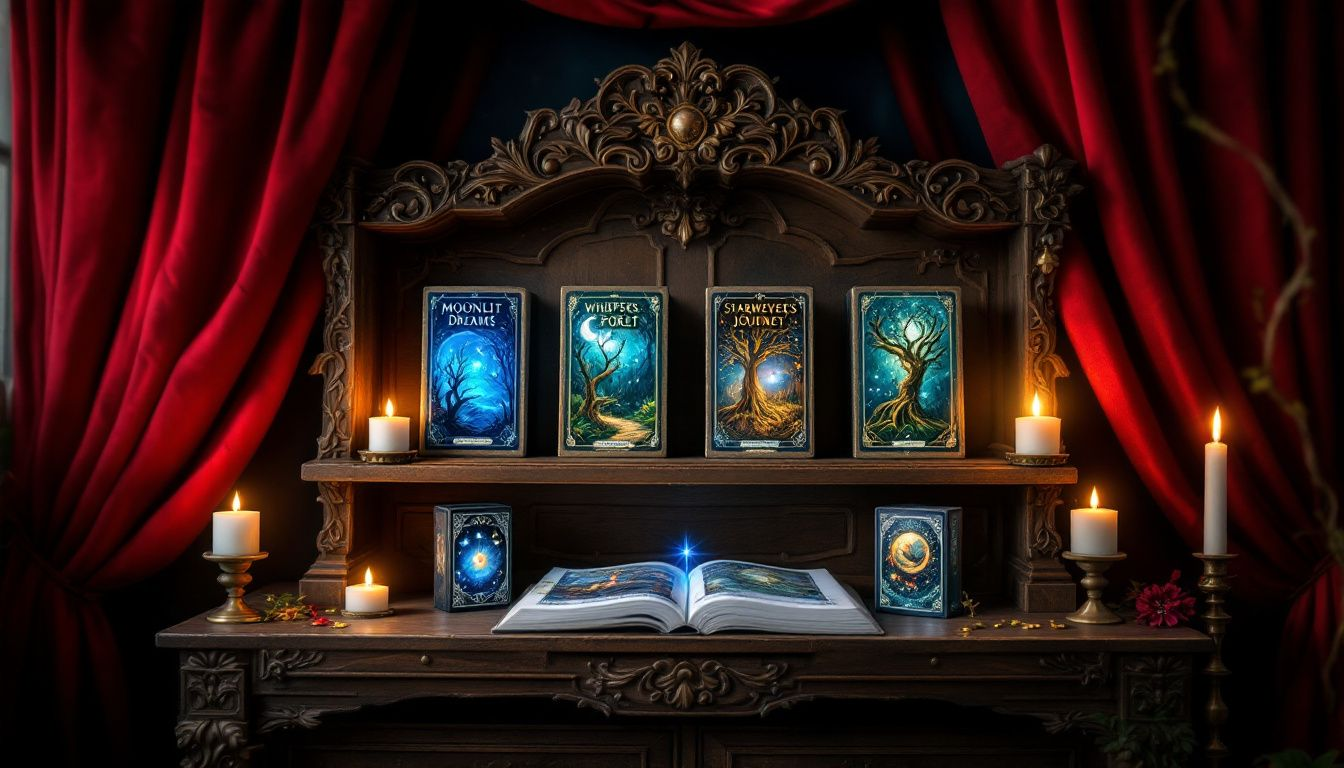
A traditional tarot deck is made up of 78 cards, segmented into the Major Arcana and Minor Arcana categories. The former comprises 22 cards that symbolize important themes and teachings in life. Meanwhile, the latter contains 56 cards split across four suits, similar to those found in conventional playing card decks.
Historically, the tarot card evolved from playing cards in the 15th century to become popular tools for divination and cartomancy. There are distinct types of tarot decks, including those used for games and those specifically designed for esoteric and occult purposes, each with its own significance in tarot readings.
In a tarot deck, individual meanings and vibrations are associated with every single card. These interpretations arise from an amalgamation of each card’s suit designation, numerical value, and embedded symbols.
What Makes Up a Tarot Deck?
Typically, a tarot deck is comprised of 78 cards that are categorized into two segments: the Major Arcana and the Minor Arcana. There are 22 cards in the Major Arcana symbolizing crucial life themes or teachings. Meanwhile, the Minor Arcana is made up of four different suits corresponding to elements - cups (water), pentacles (earth), swords (air), and wands (fire).
In each suit of the Minor Arcana, there are ten numbered pip cards along with four court cards. These court cards represent various personas within each suit.
Historical Background
Tracing their roots to the mid-15th century in Northern Italy, tarot cards were originally designed for gameplay. Over time, this changed. They took on a new role. By the 18th century’s end, French occultists adopted these cards for divinatory purposes and posited that they had connections to venerable traditions.
This transformation heralded a new era of spiritual and mystical applications for the tarot, paving the way for the array of different tarot decks available in contemporary times.
Differences Between Tarot and Oracle Decks
Tarot decks are traditionally comprised of 78 cards, which include both the Major and Minor Arcana sections, adhering to a specific organizational system. Oracle decks, on the other hand, offer a vast array of themes and can contain any number of cards, allowing for greater interpretive leeway and customization in their application.
Due to this inherent versatility, oracle cards have become favored among individuals who desire an approach to divination that is tailored more closely to their personal journey and preferences.
How to Choose Your First Tarot Deck
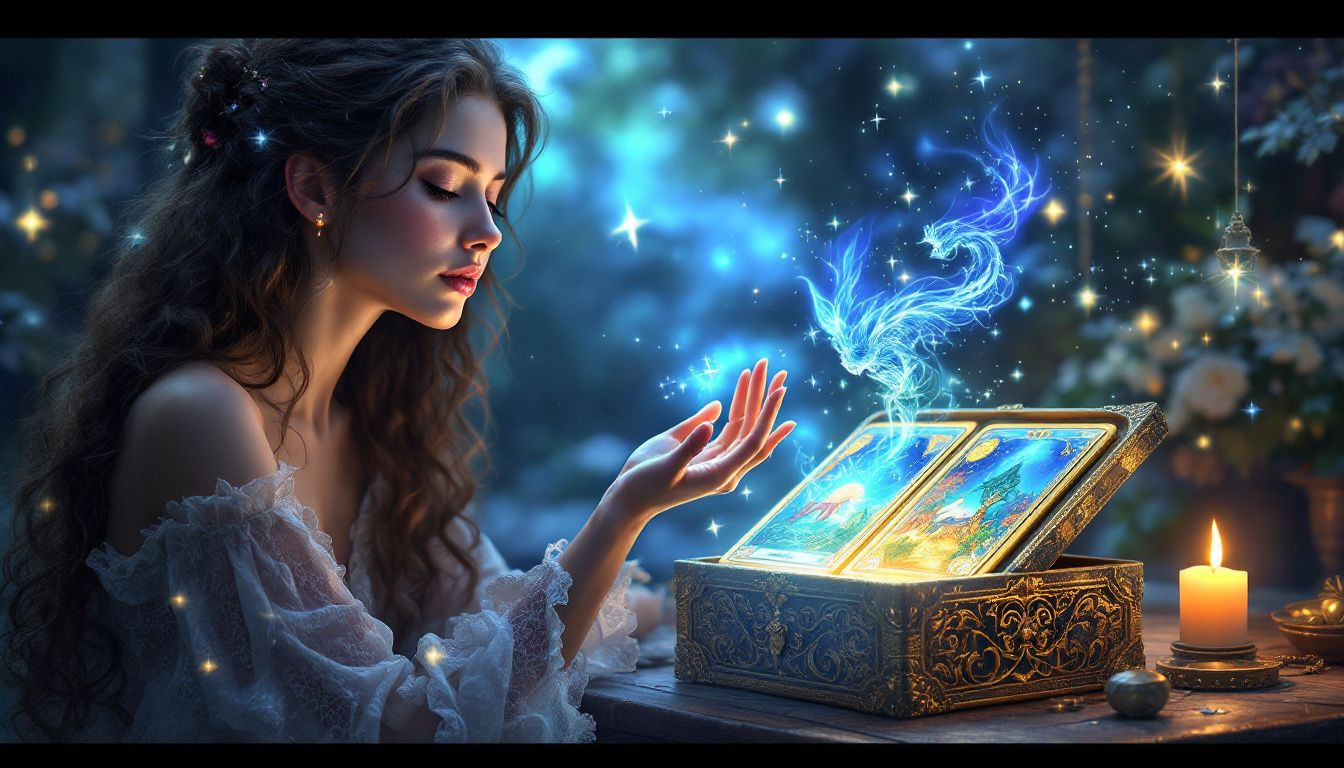
Embarking on the quest for your initial tarot deck is an intimate and distinctive experience. With many tarot decks available, securing a deck that profoundly aligns with you is vital, as such a bond will amplify the quality of your readings and bolster your intuitive prowess. Delve into considerations like the design, thematic elements, and inclusivity present in the tarot cards. Tangible attributes such as the dimensions and durability of the cards should be taken into account.
In essence, selecting a tarot deck isn’t about adhering to strict guidelines. It’s fundamentally about trusting what instinctively seems suitable for you.
Connecting with the Artwork
The visual design of a tarot deck is instrumental in establishing a personal bond with the tool. The aesthetic attractiveness of the deck can greatly improve your sense of emotional engagement and ease throughout tarot readings. Take, for instance, the Wild Unknown Tarot. It features unique hand-drawn images that highlight nature and animals, which entices those who read intuitively.
Selecting a tarot deck whose artwork speaks to you on a deeper level can elevate the significance and involvement in your practice of tarot reading.
Considering Deck Themes
Your selection of a tarot deck is significantly shaped by thematic components. Decks such as the Everyday Tarot employ simplistic imagery and restricted color schemes for straightforward comprehension, while options like animal tarot or angel tarot enable practitioners to engage with particular symbols and energies that hold personal significance.
Opting for a themed deck that resonates deeply with you can intensify your affinity with the cards and enrich the profundity of your tarot readings.
Representation and Inclusivity
Ensuring diverse representation in tarot decks is crucial for users from varied backgrounds to identify with the imagery on the cards. Take the Modern Witch Tarot deck as an example. Praised for its contemporary and inclusive portrayals, it consists of dynamic illustrations by Lisa Sterle that depict a variety of women eschewing traditional stereotypes.
Such inclusive tarot decks can enhance your practice of tarot, making it more personal and strengthening its impact.
Popular Tarot Decks for Beginners
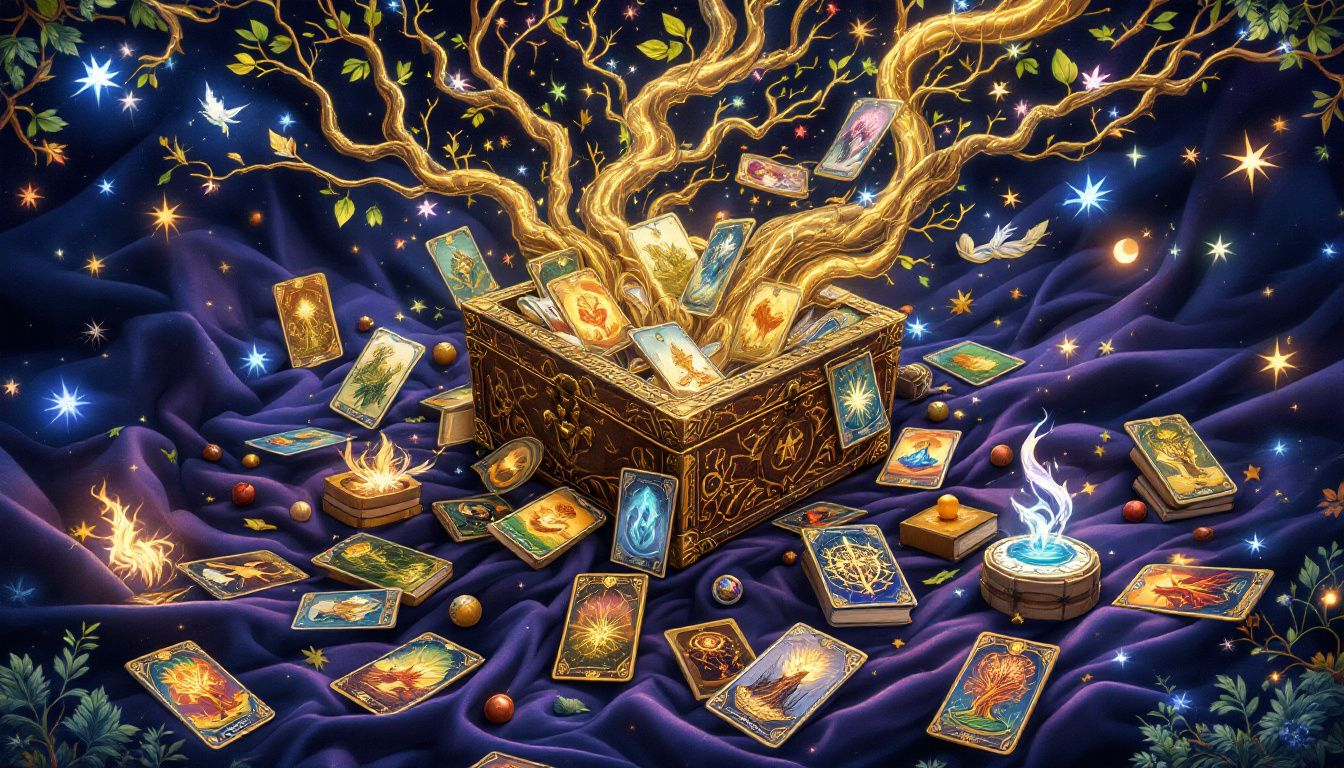
For those new to tarot, selecting a beginner-friendly deck is essential. Consider starting with two decks that combine features from well-known cards to create a streamlined learning experience. These decks typically include clear symbols and guidance, making it easier to understand and interpret the cards. Some decks even have meanings printed directly on the cards, providing instant insights during readings.
Below are some popular tarot decks that are particularly well-suited for beginners.
Rider Waite Deck
The Rider Waite deck, created by Arthur Edward Waite and illustrated by Pamela Colman Smith in 1909, is one of the most iconic and widely used tarot decks in the world. Its clear imagery and symbolism make it accessible for both new and experienced readers.
This one deck set a new standard deck by including fully illustrated scenes on all the cards of the Minor Arcana, making it a popular choice for beginners.
Modern Witch Tarot
The Modern Witch Tarot deck is celebrated for its contemporary approach and inclusive visuals that resonate with a broad spectrum of individuals. It reinterprets the classic symbols of tarot in a way that new readers can easily relate to, while also incorporating two extra cards that enrich customary readings with their distinctive meanings.
Everyday Tarot
Everyday Tarot features a user-friendly design that is perfect for those new to tarot. The cards’ clear images and simple symbols facilitate an immediate connection for users. It’s designed with an inviting interface and descriptions that suit readers from novice to experienced, providing an accessible tool for regular readings.
Advanced Tarot Decks for Experienced Readers
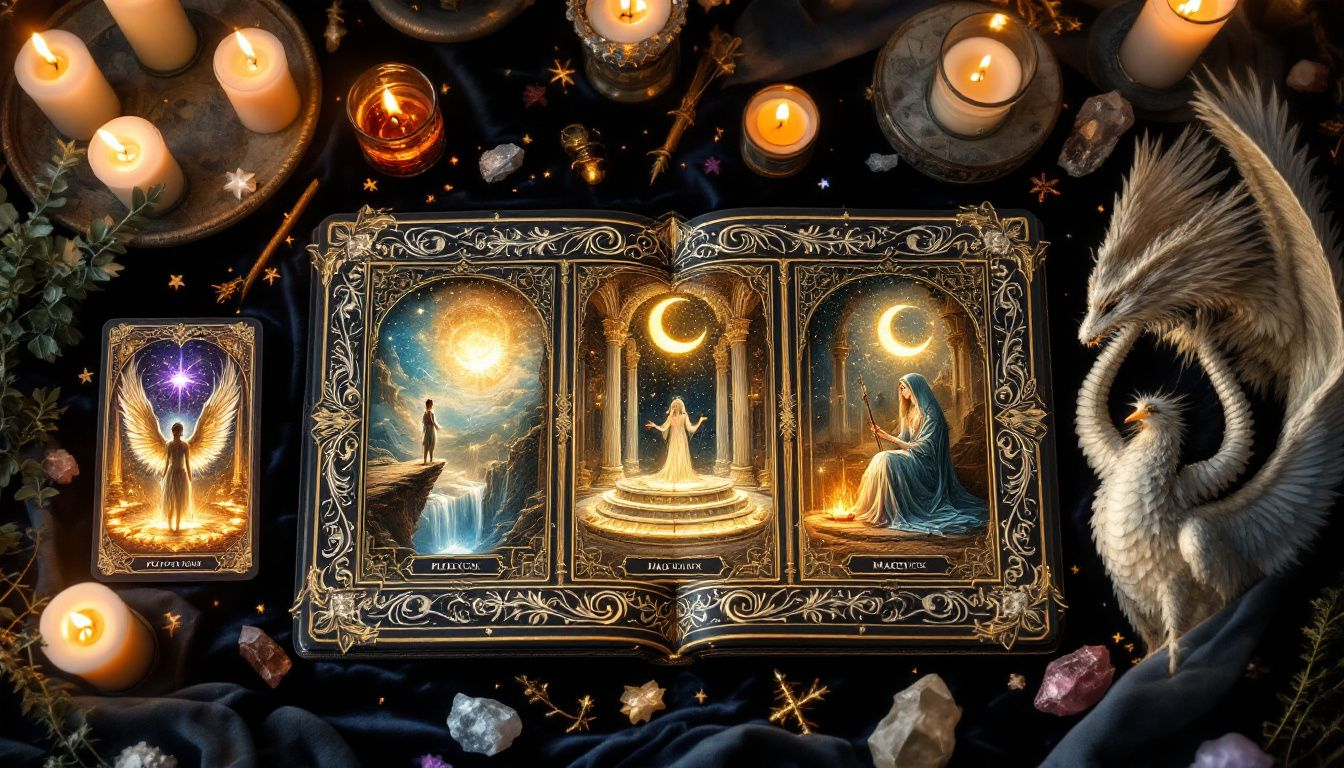
For those with more experience, advanced tarot decks offer deeper symbolism and complexity. These decks are designed to challenge and expand your understanding of tarot, providing richer insights and interpretations.
Below are some of the best tarot decks favored by advanced practitioners.
Thoth Tarot Deck
The Thoth Tarot deck, crafted by Aleister Crowley, is celebrated for its deep symbolism and the complexity of its designs that tie into numerous mystical traditions. This has made it particularly popular with experienced practitioners of tarot.
First made available in 1969, the Thoth Tarot’s ongoing presence in print reflects its persistent popularity among users.
Wild Unknown Tarot
Renowned for its hand-crafted illustrations that feature nature and animals alongside symbolic elements, The Wild Unknown Tarot deck captivates with its vibrant hues and detailed artwork. It attracts tarot practitioners who desire profound insights.
The deck is designed to prompt users to personally decipher the messages it conveys, fostering a blend of emotional and instinctual reactions during readings.
Shadowscapes Tarot
Renowned for its captivating illustrations inspired by folklore and fairytales, the Shadowscapes Tarot was crafted by Stephanie Pui-Mun Law. The deck offers an opportunity for individuals to delve into their intuition using the detailed artwork that weaves a story in each card, rendering it attractive to novice and seasoned tarot readers alike.
Where to Buy Tarot Decks
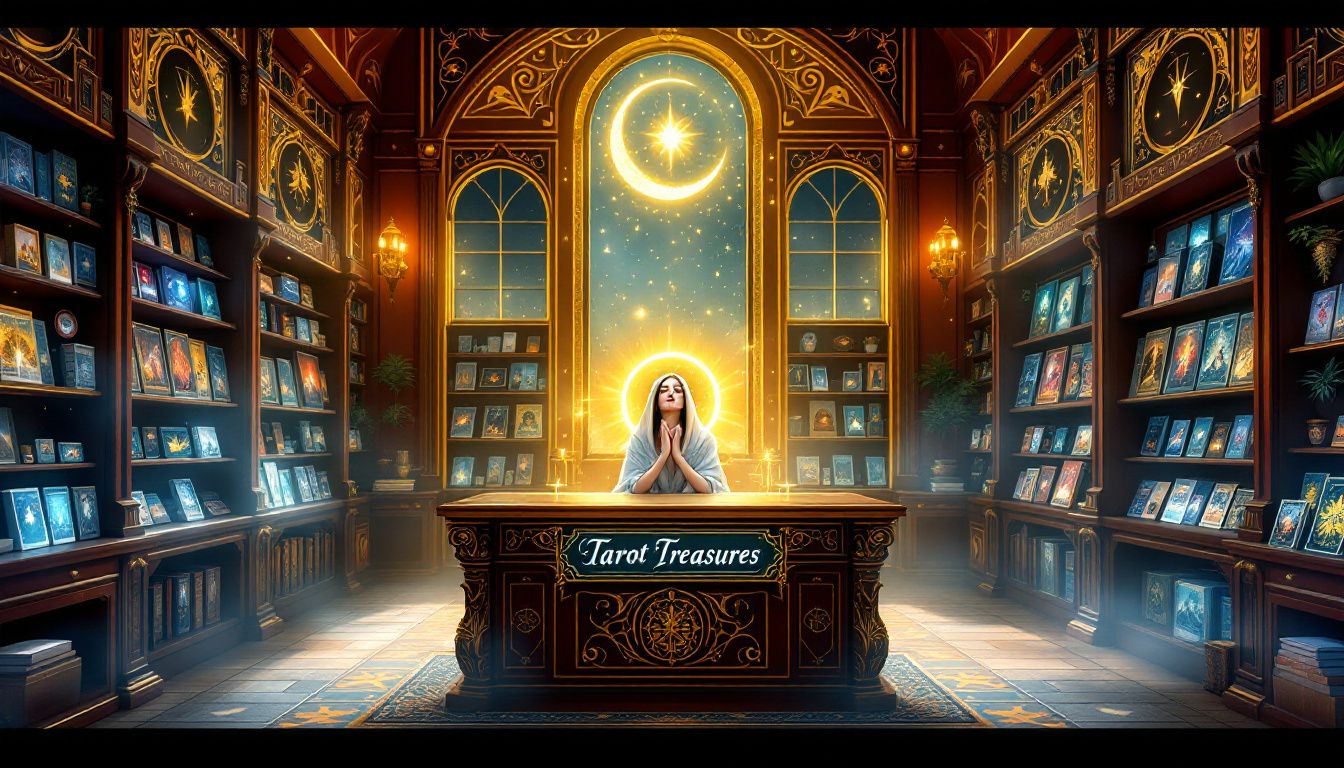
When selecting tarot decks for purchase, it’s essential to reflect on the ethical aspects linked to your decision. Choosing creators whose values resonate with yours may deepen your bond with the deck.
Numerous avenues exist when looking to acquire tarot decks, ranging from independent artists and shops to digital platforms that offer such items.
Independent Artists and Retailers
Acquiring decks from independent creators and shops enhances the bond with the artwork, as these retailers typically place a higher value on ethical practices and quality rather than opting for mass-produced items.
Opting to purchase directly from artists often leads to acquiring distinctive, handcrafted decks imbued with an individualized touch.
Online Marketplaces
A diverse selection of tarot decks from various authors is readily available on platforms such as Etsy, along with dedicated tarot sites. It’s crucial to assess the sellers for their authenticity and product quality thoroughly, which ensures you steer clear of untrustworthy vendors and varying deck standards.
Opting to buy through websites that focus specifically on tarot can yield comprehensive information and insights regarding the individual decks offered.
Caring for Your Tarot Deck
Maintaining the vitality of your tarot deck is crucial for preserving its energetic essence and securing more accurate readings. Engaging in consistent cleansing, recharging practices, appropriate storage solutions, and habitual upkeep can significantly improve both its durability and function.
Now let us explore a variety of actionable strategies to take proper care of your tarot cards.
Cleansing and Charging Your Deck
Consistently purifying tarot cards is crucial as it removes lingering energies and improves the precision of their guidance during readings. Cleansing techniques for tarot decks can be executed through the smoke from smoldered herbs or incense, with sage or Palo Santo being common choices.
Infusing your tarot deck with renewed energy while simultaneously dispelling old vibrations can be achieved by charging them under the light of a full moon. An uncomplicated but potent method is to tap on the deck thrice, which helps in altering and revitalizing its energetic state.
Storage Solutions
It’s crucial to safeguard your tarot deck appropriately to prevent wear and damage, which can affect its longevity. Securely housing your cards in options such as ornamental boxes or bespoke tarot organizers will ensure they stay in good condition for extended use.
Opting for soft fabric bags or pouches not only shields the tarot cards from potential scratches and dust accumulation, but also allows you to add a personal flair to how you store them.
Regular Maintenance
Regular upkeep is crucial to keep your tarot deck in excellent shape, which will prolong its life and the precision of your readings. By attentively shuffling the cards and frequently inspecting them for any signs of damage, you can maintain their optimal condition for use during readings.
By adhering to these maintenance routines, you safeguard your tarot deck. This preservation enables an effective bond with its energy and enhances the clarity of the insights it provides.
Enhancing Your Tarot Practice
Improving your practice with tarot cards entails honing your intuitive abilities, keeping a journal dedicated to tarot, and actively participating in communities centered around tarot. By embracing these habits, you can expand your knowledge of the tarot system and enhance the quality of your readings.
We shall delve into these techniques to better comprehend their significance.
Developing Intuition
By quieting the mind through meditation, one can greatly enhance their intuitive skills as it allows for inner thoughts to emerge with greater clarity. This enhanced intuition is particularly beneficial during tarot readings when a deeper awareness is cultivated through mindfulness exercises.
For a tarot reader to deliver precise and profound readings, establishing confidence in their own intuition plays a crucial role. Trusting this internal guidance system is key to successful tarot interpretations.
Journaling Your Tarot Readings
Keeping a journal dedicated to your tarot readings can greatly improve the experience by providing a way to record your emotional reactions and intuitive insights. It acts as an instrument for crystallizing thoughts and feelings, allowing you to monitor personal development and insight progression over time.
By consistently documenting in a tarot journal, you are able to recognize recurring themes and bolster your intuition.
Joining Tarot Communities
Membership in tarot communities fosters a supportive network and the exchange of knowledge, which contributes to an enriched comprehension and mastery of tarot methods. Involvement in online tarot circles offers encouragement from collective wisdom and experiences, promoting a more profound grasp of tarot practices.
Engagement within these groups presents opportunities for guidance from mentors as well as cooperative education, thereby enhancing your proficiency with the art of tarot.
Summary
Embarking on the path to selecting the ideal tarot deck can be a significant personal endeavor, one that enriches your spiritual activities. Grasping both the architecture and storied past of tarot decks is essential as you choose your inaugural deck and look after it. These are integral steps towards forging an impactful bond with your cards. For those starting out, decks like Rider Waite or Everyday Tarot offer straightforward symbols for easy comprehension, while for more seasoned individuals seeking deeper layers of meaning, options such as Thoth Tarot provide intricate symbolism.
By honing your intuition, chronicling insights from readings in a journal, and engaging with fellow enthusiasts in tarot communities could intensify both rapport with and insight into this ancient practice. The key lies in finding a deck that genuinely speaks to you—propelling you forward on your journey toward spirituality. Trust yourself within this exploration process so that ultimately it’s not just about reading the cards but allowing them to illuminate the way ahead.
Frequently Asked Questions
What should I consider when choosing my first tarot deck?
When picking your first tarot deck, focus on the artwork and themes that really speak to you.
It’s all about finding a deck that feels right in your hands and resonates with your vibe!
How do I cleanse and charge my tarot deck?
To cleanse and charge your tarot deck, use smoke from Sage or Palo Santo to clear out any stagnant energy.
Try placing it under the full moon to recharge its energy. This keeps your readings fresh and accurate!
What are the benefits of joining tarot communities?
Joining tarot communities is a great way to boost your knowledge and skills while connecting with others who share your passion.
You’ll find support, mentorship, and plenty of opportunities to learn from one another!
Why is the Rider Waite deck recommended for beginners?
The Rider Waite deck is great for beginners because its clear images and symbolism make it easy to interpret.
Plus, the fully illustrated Minor Arcana cards really help you connect with the meanings!
How can I enhance my tarot practice?
To enhance your tarot practice, focus on sharpening your intuition with meditation and mindfulness. Keep a tarot journal to track your insights, and connect with tarot communities for support and shared knowledge.
You’ll see significant growth in your readings!







